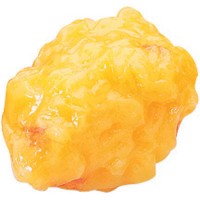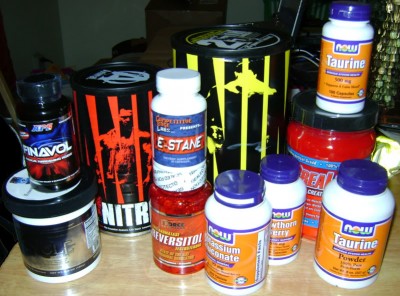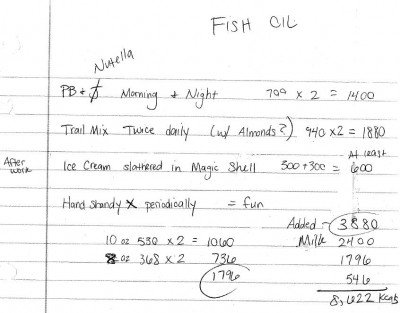This is obviously a strength training website, but strength training is an important part of a healthy lifestyle. I’ve always been healthy and helped people get healthy through proper exercise and nutrition. Now that revolves around properly programmed barbell training and conditioning — no shortcuts. As James Henderson says, shortcuts only net you short responses. That means that bullshit diet pills, diets, exercise machines, and gimmicks don’t do much. You have to put the time and effort in.
In order to build a foundation for lasting health, it’s crucial to focus on what really works: whole, nutritious foods and a balanced approach to exercise. Many people often wonder How long to lose weight, but the truth is that steady, consistent habits bring the best long-term results. Over time, this commitment to sustainable practices pays off in the form of improved strength, energy, and overall well-being.
For those looking to refine their approach to nutrition, working with a Nutritionniste can be a game-changer. A nutrition expert provides the guidance and expertise needed to navigate the overwhelming world of diets and meal plans. They can tailor strategies to your specific needs, ensuring that you’re fueling your body with the right nutrients to support your fitness goals.
Whether it’s learning to balance macronutrients or choosing nutrient-dense foods that align with your workout routine, a nutritionist helps you make informed choices that promote health in the long run. By complementing your strength training with the right diet, you’re not just enhancing your physical performance—you’re setting yourself up for lasting, sustainable health.
I’ve always been pissed off by mainstream health, whether it be magazines, TV, or online. They will usually cite a single piece of research (which may or may not be valid research in the first place) and generalize from it. Or, they’ll try pansy-ass short-cuts, and this is what this article does (Note: I’d prefer if you didn’t click on the link so that website doesn’t think they produced something worth reading, but you’re free to choose your density).
This article consists of “weight-loss tips that work” for people that “can’t stick to their diet” (which I read as “fake shortcuts” for “people who can’t commit to anything and are lazy”). They list ten things that are supposed to achieve this, and it’s one of the shittiest lists I’ve ever seen. Several of the items don’t even make sense when you consider their “politically correct” and mainstream fitness source. One method tells the reader to literally gross themselves out by getting their silverware dirty, tossing a napkin on their plate, or (get ready for this) buying a five pound glob of fat to put in the fridge. Then there’s the whole “purposely wear your old, tight clothes so that you’re guilted into not eating food” thing. When did negative reinforcement become a favorite weapon of mainstream health? These are the same people that say you shouldn’t spank your kids (or even your dogs).
One method was suggesting that you change the ingredients of your favorite fattening foods (like cake and muffins) to include no-sugar apple sauce and whole-wheat flour. This, of course, ignores the whole hormonal effect from macro-nutrients and encourages the person to continue eating carbohydrate rich foods that will inevitably continue making them more fat. It’s almost as stupid as recommending people to laugh in order to burn calories and shape their six pack. Oh, wait, they did that too.
Another common misconception in the health world is that simply swapping out ingredients or indulging in laughable gimmicks will lead to lasting change. But the reality is far more complex, especially when it comes to our hormonal response to certain foods.
True wellness comes from addressing the root causes—balancing hormones, improving gut health, and delivering real nutrients to your body. This is where Ancient Nutrition has truly made a difference, revolutionizing the supplement industry by bringing back time-tested ingredients like bone broth and fermented herbs. Unlike the flashy, empty promises often sold in the name of weight loss, these ingredients provide a deeply nourishing approach to health, focusing on real, sustainable results. For those considering weight loss surgery, it’s helpful to compare the options not just by effectiveness but also by price. Understanding which procedures offer the best value can make all the difference when it comes to planning your journey. Check out this Charlotte weight loss clinic for more info on weight loss procedures.
By using these natural elements, Ancient Nutrition has created tailored health solutions that align with the body’s needs, rather than merely masking symptoms or relying on quick fixes. This kind of thoughtful approach provides real benefits and, most importantly, acknowledges that wellness is a holistic process involving much more than swapping sugar for applesauce.
Not only has money been wasted on doing research on laughter as exercise, they’ve gone off and RECOMMENDED that you should be laughing a MINIMUM of 15 minutes a day. I am so PISSED as I’m typing this saldkkvh’oiauwnba owhf3082hjxckmnvsxcc s1!!11!!!
Big breath, ooooooKAY. It was also recommended to purchase dishware that is smaller, since apparently larger plates make people eat too much. Oh, and fidgeting throughout the day is recommended in order to burn calories. You know how they came up with that one? They put “motion-sensing devices in underwear”. I’m not making this shit up. They put a thing-a-ma-bob in the underwear of regular people and fat people, and found that fat people were moving less. No shit?
“Say…” says the pervert, “Think we can do some research where we, uh, put some, uh, devices…yeah devices! into people’s underwear? To, you know, check for movement and stuff throughout the day.”
“Johnson, I think you’re onto something. Let’s get that funding.”
The only decent pieces of advice were getting rid of junk food in the house and doing push-ups during commercials. I didn’t say it was good advice, just decent. Because it didn’t give any hints on what you should be eating (besides cake and toothpaste) and it didn’t suggest that fat people should deviate from their normal schedule of watching TV at night. Fuck. That.
It’s hard for the average person to even know what is best for them, especially when bullshit like this is fed to them on a regular basis. They won’t understand that you can’t trick your body into becoming un-fat. Creating more metabolically active tissue, in the form of muscle mass, is the first step in a healthy exercise program. You do that by getting stronger. You throw in some interval type conditioning relative to that person’s ability, have them stop eating processed foods and simple carbohydrates, and it’s a pretty fool proof plan. It’s a shame that the majority of people trying to help them are actually hurting them.






